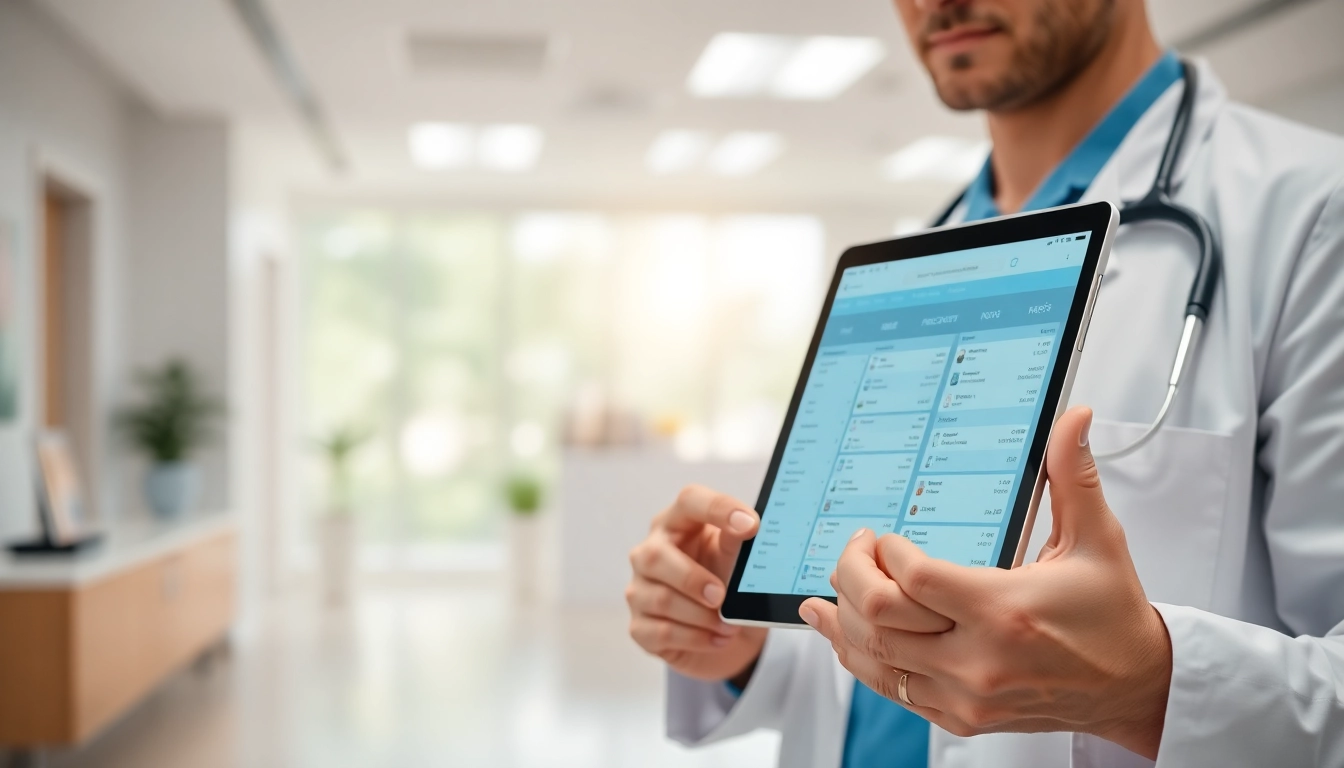
Understanding the Importance of Top Rated Prescription Applications
In today’s fast-paced healthcare landscape, the integration of technology has become essential to enhance patient care and ensure efficient medication management. With so many healthcare applications available, identifying the top rated prescription applications is critical for both healthcare professionals and patients. These applications can streamline the prescribing process, improve adherence to medication regimens, and ultimately lead to better patient outcomes.
Benefits of Prescription Applications
Prescription applications offer numerous advantages that contribute to improved healthcare delivery. Firstly, they provide healthcare professionals with tools that simplify medication prescribing and management. Features like drug interaction checkers, dosage calculators, and access to the latest medical guidelines empower physicians to make informed decisions swiftly.
For patients, these applications enhance medication adherence by sending timely reminders for medication intake and refills. Many applications also include educational resources about specific medications, helping patients better understand their treatment plans. Furthermore, some prescription applications allow patients to order medications directly from pharmacies, eliminating the need for physical travel and reducing wait times.
Challenges in Medication Management
Despite the many benefits, challenges persist in the realm of medication management. One of the primary issues is the risk of medication errors, which can lead to adverse drug reactions or ineffective treatment. Incomplete medication lists, misunderstandings about instructions, and the complexities of polypharmacy (the concurrent use of multiple medications) all contribute to this challenge.
Additionally, ensuring patient engagement with prescription applications can be difficult. Some patients may struggle with technology or prefer traditional methods of managing their health. This situation highlights the need for user-friendly applications designed with accessibility in mind.
How Technology is Changing Healthcare
The rapid evolution of technology has transformed healthcare in unprecedented ways. From telemedicine to electronic health records (EHRs), technology enhances communication between patients and providers and streamlines administrative processes. Prescription applications play a significant role in this transformation by making medication management more accessible and efficient. With features such as integration with EHRs, real-time patient monitoring, and teleconsultation options, these applications are paving the way for the future of healthcare.
Features to Look for in Top Rated Prescription Applications
When evaluating prescription applications, certain critical features stand out as essential for both healthcare providers and patients.
User-Friendly Interfaces and Accessibility
A primary concern with any application is its usability. A user-friendly interface allows both healthcare providers and patients to navigate the application easily. Features like intuitive design, straightforward navigation, and help sections contribute to enhanced user experience. Accessibility is equally important; applications should be compatible across devices and platforms, ensuring that users can access their medication information anytime and anywhere.
Security and Privacy Considerations
With increased reliance on technology comes the heightened importance of data security and privacy. Prescription applications must comply with regulations such as HIPAA (Health Insurance Portability and Accountability Act) to protect sensitive patient information. Features like data encryption, secure logins, and consent management systems are vital. As patients share more health information through applications, maintaining trust is critical. Providers must select applications that prioritize security to safeguard their patients’ data.
Comprehensive Medication Tracking
The best prescription applications provide robust medication tracking capabilities. This includes features to monitor prescriptions, track refills, and notify users of potential drug interactions. Comprehensive medication tracking empowers patients to take charge of their healthcare, ensuring they follow their prescribed regimens. Furthermore, healthcare providers can better manage their patients’ treatment plans when they have access to an up-to-date medication history.
Comparing the Top Rated Prescription Applications
When it comes to choosing the best prescription applications, it is helpful to compare options based on several criteria, including usability, patient feedback, and cost-effectiveness.
Popular Choices Among Healthcare Professionals
Healthcare professionals often have specific needs when it comes to prescription applications. Factors like clinical decision support, ease of access to drug formularies, and comprehensive prescription information significantly influence their choices. Popular applications typically emerge from thorough evaluations and positive endorsements from medical practitioners.
Patient Feedback on Application Performance
Patient feedback is invaluable when gauging the effectiveness of prescription applications. Reviews and ratings can provide insight into how real users experience an application. Key performance indicators may include ease of use, responsiveness of customer support, and user satisfaction regarding the application’s ability to meet their medication management needs. Listening to the patient perspective can help developers refine their products to better serve users.
Cost-Effectiveness of Different Applications
Cost is a crucial factor for many users when selecting a prescription application. Analyzing the cost-effectiveness of different options allows users to find value without compromising quality. Potential costs may include subscription fees, in-app purchases, or charges for premium features. Some applications offer free versions with limited features, while others may require full payment for access to all functionalities. Comparing these costs with the benefits received can help users choose wisely.
Implementing Top Rated Prescription Applications in Healthcare Settings
For healthcare facilities looking to integrate prescription applications into their practices, a structured approach is critical for successful implementation.
Steps for Successful Integration
Successful integration of prescription applications begins with a clear plan. Facilities should assess their specific needs and requirements before selecting an application. Collaboration between IT, healthcare teams, and administrative staff can ensure the application meets clinical requirements while also integrating with existing systems.
After selection, professionals should create implementation strategies that include piloting the application with a select group of users. Feedback during this initial phase can highlight any technical difficulties or usability issues that can be addressed before full launch. Continual assessment and adaptation can significantly enhance the implementation process.
Staff Training and Patient Education
Staff training is essential to ensure the effective use of prescription applications in healthcare settings. Training programs should cover the application’s features, troubleshooting, and best practices for usage. By investing in staff education, healthcare facilities can empower their teams to make the most of available technology.
Patient education equally plays a vital role. Providing patients with instructions on how to use the application effectively can improve adherence and engagement. Offering demonstrations, brochures, or online resources can help patients feel confident in navigating the technology.
Measuring Application Impact on Patient Outcomes
Once prescription applications have been implemented, measuring their impact is critical. Healthcare facilities should monitor key performance indicators such as medication adherence rates, reduction in medication errors, and overall patient satisfaction. Regular reviews can help identify areas for improvement and reinforce the importance of technology in enhancing patient care.
Future Trends in Top Rated Prescription Applications
The landscape of prescription applications is continuously changing as advancements in technology evolve. A few key trends are emerging that could reshape how these applications function in the future.
Advanced Features on the Horizon
As technology progresses, prescription applications are likely to incorporate advanced features. For instance, capabilities such as personalized medication management based on genetic information or enhanced data analytics for more effective chronic disease management may soon become standard. The utilization of virtual reality and augmented reality could also revolutionize how patients learn about their medications and treatments.
The Role of AI and Machine Learning
Artificial Intelligence (AI) and machine learning are poised to become game-changers in prescription applications. These technologies can offer tremendous potential in tailoring medication recommendations, predicting patient responses, and even adjusting treatment plans in real-time. As AI algorithms become more sophisticated, the accuracy and personalization of prescription management will significantly improve.
Enhancing Patient Engagement through Technology
Future prescription applications will likely focus more on enhancing patient engagement. Features that facilitate communication between patients and healthcare providers, such as chat functionalities or video consultations, may become commonplace. Gamification elements such as rewards for medication adherence or community features to promote social support can also foster a greater sense of involvement in managing one’s health.
In conclusion, the advent of top rated prescription applications marks a significant advancement in medication management. By leveraging technology effectively, healthcare providers can enhance patient care, streamline workflows, and ultimately lead to improved patient outcomes. The future of these applications promises even greater potential as innovations continue to emerge, ensuring that both healthcare professionals and patients benefit from advancements in technology.







